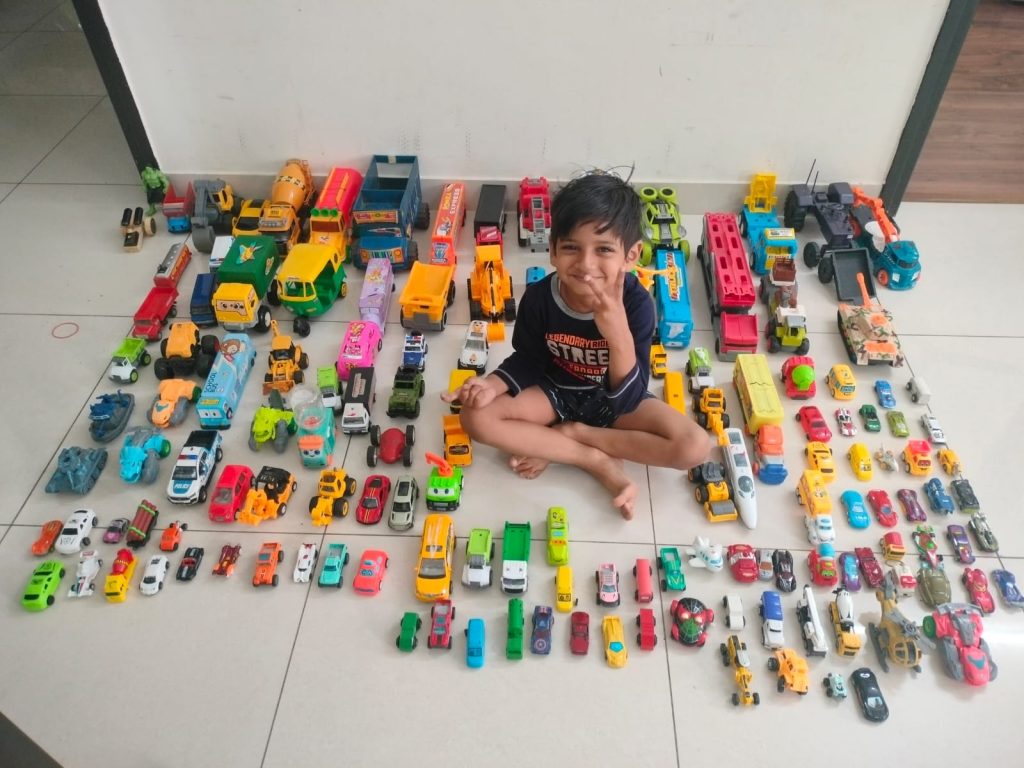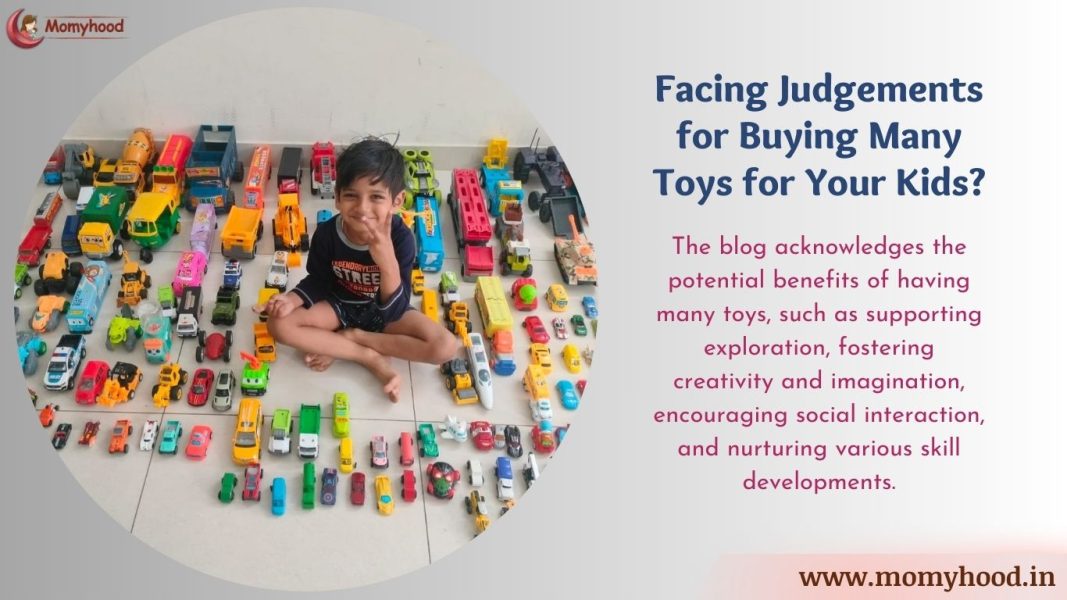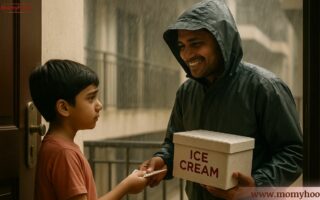In today’s world of conscious parenting, buying many toys for your child can often invite judgment. But is it really a sign of poor parenting or lack of quality time? Let’s explore the real story behind this choice—and how it can benefit your child when done mindfully.
“Give your time rather than toys.”
This quote beautifully reminds us that a child’s emotional needs are best met with love, presence, and meaningful moments. But does that mean buying many toys is wrong? Not at all.
As parents, we must stop judging others based on how many toys they buy. What truly matters is the intention behind the action—and the balance we strike between material and emotional investment.
Why Are Parents Buying Many Toys?
There are many thoughtful reasons behind buying many toys:
-
Encouraging creativity and curiosity
-
Supporting learning and specific interests
-
Limiting screen time with hands-on activities
-
Making up for time constraints or past experiences
If parents can afford it, toys can be a meaningful gift—not a replacement for time, but a support for creativity, imagination and learning.
Toys Can Be Powerful Tools for Growth
Let’s appreciate the positive side of buying many toys—they can spark joy, learning, and growth. But let’s also remember that our time, love, and presence are the most valuable gifts. When toys support, not replace, meaningful connection, we create a healthy balance that nurtures our children’s happiness and development. Let’s explore the developmental benefits of toys:
Supporting Exploration and Growth
Toys can spark curiosity and encourage children to explore the world around them. Each toy ignites a child’s passion for discovery.
📣 Loved what you read? Want to go deeper into conscious parenting? ✨ The Power of Manifestation in Parenting is now available — A soulful guide packed with real-life tools like affirmations, energy shifts, and sleep talk that I personally use with my son, Hitarth. 💛 Start your journey toward calmer, connected parenting today. 🎉 Launch Offer: Only ₹99 (limited-time price!) 📲 Instant download. No waiting. 👉 Grab your copy now!.
Example
Hitarth has an impressive collection of vehicles—not just construction ones like dump trucks, excavators, cranes, and bulldozers, but also cars, buses, fire engines, police jeeps, ambulances, garbage trucks, and even miniature traffic lights and road signs. His play area is a vibrant, bustling world where roads are built, jams are created and cleared, sirens whizz past, and traffic flows in perfect harmony—all designed and managed by him.
He spends countless hours immersed in his miniature city, orchestrating grand projects with his vehicles, building bridges with blocks, and creating elaborate setups where each vehicle has a role to play. Sometimes there’s a traffic jam, and he skillfully navigates emergency vehicles like ambulances and police cars to clear the way. Other times, he recreates road rescue scenes, construction site activities, or city traffic systems with remarkable attention to detail.
We are constantly amazed by his deep knowledge and passion for vehicles. He not only knows the names of each one but also understands their unique functions and how they contribute to the world around us. Through this imaginative play, Hitarth is developing more than just cognitive and motor skills—he’s learning problem-solving, planning, coordination, and the importance of systems and roles in real-world functioning.
What fascinates us most is his curiosity. If he sees a new or unusual vehicle on the road—even something as niche as a road roller, a water tanker, or a towing van—he immediately wants to know what it does and how it fits into the bigger picture. And yes, he often wants to add it to his collection too!
This love for vehicles has not only sparked his creativity but has also nurtured a sense of observation, curiosity, and real-world learning. His toys have become more than just playthings—they’re his tools for exploration, learning, and building an imaginative world that’s entirely his own.

Fostering Creativity and Imagination
A wide variety of toys can stimulate your child’s creativity and imagination. From building blocks to dolls, each toy offers unique opportunities for exploration and self-expression. By providing a diverse collection of toys, parents can nurture their child’s cognitive and imaginative development.
Also read: The Power of Bedtime Conversations: How Talking with Hitarth Eases My Parenting Journey
Example
Let’s dive into the world of Hitarth, who has discovered a world of endless possibilities through his independent play sessions. Hitarth’s toys of choice apart from vehicles? Magna Tiles and building blocks. These simple yet versatile toys have become the key to unlocking his boundless creativity and captivating his imagination for hours on end.
We, as Hitarth’s parents have witnessed his deep fascination with construction and design, and we have lovingly provided him with a diverse collection of Magna Tiles and an array of building blocks. With these tools at his fingertips, Hitarth immerses himself in a world of creativity and self-expression.
Encouraging Social Interaction and Skill Development
Toys serve as valuable tools for promoting social interaction and cooperation among children. When kids have access to a variety of toys, they can engage in shared play experiences, taking turns, negotiating roles, and collaborating on imaginative adventures. This helps them develop vital social skills, such as empathy, communication, and teamwork.
Example
Consider a tea set. Playing with it allows children to engage in pretend play, taking on roles like a host, a guest, or even a chef. This type of play encourages social interaction as they learn to communicate with their playmates, share responsibilities, and cooperate to create a delightful tea party experience.
Nurturing Curiosity and Skill Development
Different toys cater to various aspects of child development. By offering or buying many toys, parents can provide opportunities for their children to develop and refine different skills. Each toy contributes to a specific area of growth, whether it’s fine motor skills, problem-solving abilities, language development, or spatial awareness.
Example
Educational toys, such as puzzles, enhance a child’s cognitive skills, pattern recognition, and problem-solving abilities. As they engage in puzzle-solving, they learn to analyze shapes, match colors, and develop logical thinking skills.
Let’s take the case of Hitarth, a curious and eager learner who finds joy in engaging with educational toys. His toy collection includes seek-and-find games, “What’s Next” puzzles, and a set of flashcards featuring flags of different countries. The “What’s Next” puzzles provide Hitarth with a platform to develop his logical thinking skills and problem-solving abilities. With each puzzle he solves, he learns to analyze sequences, identify patterns, and make predictions. These skills not only enhance his cognitive abilities but also lay a strong foundation for mathematical and analytical thinking in the future.
Hitarth spends hours engrossed in these educational toys, eagerly searching for hidden objects, solving sequence puzzles, and familiarizing himself with the flags of countries from around the world. We are amazed by his thirst for knowledge and his ability to absorb information effortlessly. Check this article on The 51 best gifts and toys for 8-year-olds in 2024.
Does Buying Many Toys Replace Quality Time?
Absolutely not.
Having toys doesn’t mean less parenting—it can mean more meaningful engagement.
We buy toys and we go on walks, tell bedtime stories, and spend hours at the apartment play area every day.
Hitarth’s toy collection is just one part of his rich, balanced childhood.
Alternative Approaches: Fostering Development Beyond Toys
While buying many toys can be exciting and beneficial, it’s equally important to explore other ways to support your child’s growth. These alternatives enrich their development and create deeper bonds beyond material play.
Experiences and Outings
Exposing children to new experiences and environments can be incredibly enriching. Family outings to museums, zoos, parks, or cultural events provide opportunities for exploration, learning, and bonding. These experiences stimulate their curiosity, broaden their horizons, and foster a love for lifelong learning.
So what if some kid has a collection of toys? Does this mean, his parents don’t spend enough time with him/her? No, right? Hitarth also has collection of toys but he also embraces alternative approaches to spend quality time with us. One of our favorite activities is venturing out together, exploring public parks and various places that offer unique experiences and learning opportunities. These outings have become a cherished part of our family routine, creating joyful moments and lasting memories.
Engaging in Creative Activities
Encourage your child’s creativity through arts and crafts, drawing, painting, or building projects. Providing them with art supplies, recycled materials, or natural elements can spark their imagination and allow them to express themselves freely. Engaging in these activities together promotes quality time and nurtures their creative and problem-solving skills.
Reading and Storytelling
Books open the doors to magical worlds and ignite a love for reading. Regular reading sessions with your child not only enhance their language skills but also foster their imagination, empathy, and cognitive abilities. You can also engage in storytelling sessions where you create imaginative tales together, encouraging their creativity and critical thinking.
We cherish the tradition of storytelling before bedtime. Each night, we take turns sharing captivating tales, igniting Hitarth’s imagination and fostering a love for reading. These precious moments create a cozy and magical atmosphere in our home, nurturing his creativity and language skills.
Nature and Outdoor Exploration
The wonders of nature offer abundant opportunities for learning and growth. Take your child on nature walks, camping trips, or gardening adventures. Exploring the outdoors promotes physical development, sensory exploration, and an appreciation for the natural world. It also instills values like environmental awareness and responsibility.
Social Interactions and Playdates
Encouraging social interactions and playdates with peers is crucial for a child’s social and emotional development. It allows them to learn important skills such as sharing, communication, and cooperation. Organize playdates, participate in community events, or enroll them in extracurricular activities that align with their interests.
Every day, for at least 2 hours, Hitarth and I escape to our apartment’s play area. It’s a cherished routine that keeps me grounded in my parenting journey while providing Hitarth with the opportunity to bond with his friends from the neighborhood. In this shared space, laughter fills the air as Hitarth engages in fun activities and builds unforgettable memories with his social circle. This valuable social interaction not only brings joy to his days but also nurtures important social skills and a sense of belonging within our community.
So? A Real Example from Our Life
Yes, Hitarth has many toys.
But he also has:
-
Storytelling time
-
Outdoor adventures
-
Art sessions
-
Playtime with friends
-
Cuddles, talks, and undivided attention
Buying toys is not about replacing our presence—it’s about complementing it.
Final Thoughts: It’s All About Balance
Buying many toys can be a positive, enriching choice—if done mindfully. But remember:
The greatest gift isn’t a toy—it’s YOU.
Whether you can afford to buy many toys or not, the key is to prioritize quality time, engagement, and meaningful experiences with your child. Focus on creating a nurturing environment that supports their holistic growth and well-being. By striking a balance and embracing alternative approaches when necessary, you can provide your child with the love, guidance, and support they need to thrive.
What’s your take on toys vs. time? Drop your thoughts in the comments!
Your comments and shares do more than just support our blog—they uplift the amazing moms who share their stories here. Please scroll down to the end of the page to leave your thoughts, and use the buttons just below this line to share. Your support makes a big difference!



